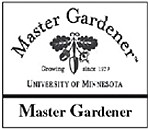October 27, 2005 at 7:06 a.m.
These bugs gather wherever there are boxelder trees. They are members of the insect order Hemiptera (true bugs), and are common in and near the Mississippi River Valley. The adult bugs are brown to black with three red stripes just behind their head, and red veins on their wings. Young boxelder bugs are called nymphs, and are bright red. Large populations are often correlated with long, hot, dry summers.
Boxelder bugs don’t have a negative effect on the trees they feed on. The biggest problem with them is their attempt to find homes to keep them over the winter. The bugs hide in cracks and crevices in walls, in door and window casings, around foundations, in stone piles, in tree holes and in other protected places. During warm winter and spring days, they may become active, moving from their hiding places into living spaces. They also like to gather in sunny areas on outside walls, porches, and walkways. The bugs give off an unpleasant odor when crushed and can stain indoor surfaces and textiles with their droppings. When they occur in large numbers on or in dwelling places they can be a real nuisance. In that case homeowners may seek control measures.
Eliminate potential hiding places such as piles of boards, rocks, leaves, grass and other debris close to the house. Rake leaves and grass away from the foundation in a 6 to 10 foot-wide strip, especially on the south and west sides of the structure. Be sure to caulk and close openings where boxelder bugs can enter the house such as around light fixtures, doors and windows, unscreened vents, holes in walls around utility pipes or conduits, air conditioners, heat pump lines and through the foundation. They are also attracted to lights and can fly in open doors or windows.
Sunny walls, tree trunks, and walkways can be sprayed with a forceful blast of plain water, or a soap and water solution, to dislodge bugs.
These measures are only temporary as the bugs will return after treatment wears off.
Insecticides such as Carbaryl or Pyrethrins can be used, and are more effective on young nymphal stages than adults. When I wrote this back in 2000 one could also use Dursban and Diazinon, but they are no longer on the market.
The boxelder tree is sometimes called the ash-leaved maple due to its narrow leaves. The female trees are prolific seed producers. The bugs feed mainly on these seeds, but will also feed on the leaves and twigs of the boxelder, as well as on ash, maple, and fruit trees. Spraying boxelder trees will have little effect on populations that enter the home. Inside living spaces, it is safest and most effective to vacuum up bugs as they appear and dispose of them. The only lasting control is to remove any seed-bearing Boxelder trees near the buildings. Boxelder bugs can fly up to two miles to find shelter. Removing female trees and outdoor debris where the bugs can hang out near the house will greatly reduce numbers that over-winter in homes.
+++++
In Your Yard and Garden
Tender bulbs need to be dug once they're hit by frost. This includes gladiolas, canna, callas, begonias and dahlias. After digging, allow the bulbs a few days to dry and then store them in a cool, dry and dark place. A cardboard box with a few holes for ventilation and filled with peat moss will work well.
It is getting late to plant most spring bulbs, although the nice weather may have extended that window. The exception is tulips, they can go in as late as you can get a shovel in the ground.
Ways to Access Information
The voice mail is checked year round. Leave a message at 651.674.4417 ext. 18, and a Master Gardener will return your call.
www.extension.umn.edu/county/chisago
Check out the 'Hot Topics' box in the middle of the page for current Chisago County Master Gardener news and events.
You can also click on 'Ask a Master Gardener' next to the cute little flower on the right hand side of the page. Here you can search 1000's of answers from Master Gardeners around the state.
If you don't find your answer you can submit a question online or search for University publications.
Bell Museum of Natural History
For information about snakes, skunks, raccoons or other wildlife around your yard, call the wildlife information line at (612) 624-1374 or www.bellmuseum.org.
To see the latest Yard and Garden newsletter, go to: http://www.exten sion.umn.edu/yardandgarden/YGLNews/YGLNews.html.






Comments:
Commenting has been disabled for this item.